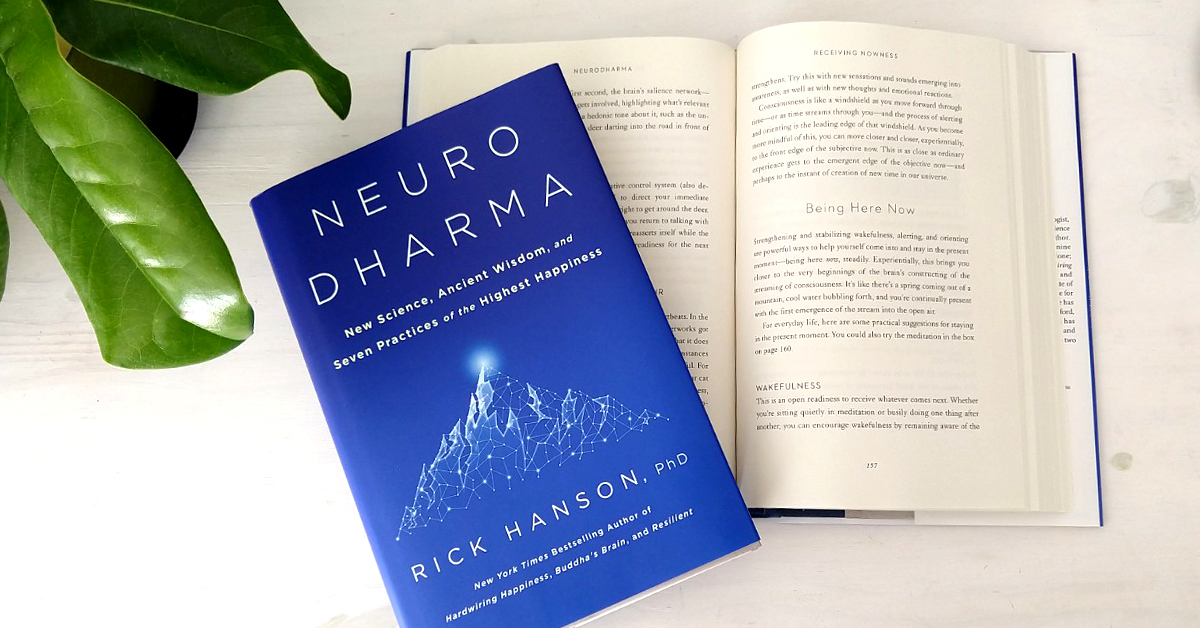
27 Oct Preface by Dr. François Bourgognon
[translated into English from the French edition of Neurodharma]
Have you noticed the extent to which it can be difficult to understand one another when we talk about meditation? When really there is not one kind of meditation, but many. In our western culture, the word ‘meditation’ is used to designate very different – even opposing – attitudes and practices, depending on the context in which it is used: philosophical, religious, or therapeutic. In eastern cultures, meditative practices are several thousand years old and are as ancient as they are varied – some, for example, cultivate a state of deep relaxation, whereas others are exclusively centred on directing your attention in a particular way. So, it is essential to define exactly what we mean by meditation.
In a secular medical framework, so-called mindful meditation or mindfulness refers to an attentional training that consists in just endeavouring to be fully present to what is happening in the here and now: to that which happens within the self (thoughts, emotions, body sensations) and around the self (in other words what you perceive through the five senses). Although it has its roots in Buddhist traditions, mindfulness here means an attention practice, outside all forms of belief. Since the MBSR (Mindfulness Based Stress Reduction) programme was created by Jon Kabat-Zinn in 1979, therapeutic interventions based on mindfulness have become widespread in the healthcare sector for the following: stress, anxiety, preventing depressive relapses, chronic pain, addictions etc. On a psychological level, the action mechanisms involved in emotional and cognitive regulation begin to take shape. On the subject, the Acceptance and Commitment Therapy model (ACT) identifies four therapeutic processes of mindfulness: acceptance which allows you to approach your feelings; defusion which allows you to view your thoughts as mental events; contact with the present moment which brings your attention to what is happening in that instant; and the self as context which allows you to make the distinction between yourself and your present experience. Finally, it is worth adding that mindfulness, as with all learning processes, has an effect on how the brain functions, thanks to the phenomenon of neuroplasticity – neurones’ capacity to modify and remodel themselves throughout their lifespan. Numerous studies of neuro-imagery carried out on people who regularly meditate showed, in simple terms, measurable changes in areas of the brain associated with memory, attention, emotions, self-awareness, and empathy. These observations are both exciting and extremely useful, since they help us to understand the manner in which our practices change us, and how to strengthen them.
In other words, because mindfulness came from Buddhist traditions it does not mean that it can only be used or understood through the Buddhist lens. And because it is used in a secular framework it does not necessarily mean that, as some would like to hear, it corresponds to an inferior form of meditation employed for materialistic ends (tendencies that do also, regrettably, exist). Conversely, religious practice is no longer synonymous with a propensity for sectarianism. In the absence of nuance, it is difficult to discuss this subject. On the other hand, if we bear everyone’s perspective in mind, as well as their field of expertise, then wonderful spaces of exchange materialise, in which medicine, psychology, neuroscience, and contemplative tradition can meet.
This is where Neurodharma stemmed from: the confluence of different fields of knowledge. By bringing Buddhist teachings and the most recent neuroscientific discoveries together, Rick Hanson has created an absolutely brilliant blend that shows us how to train the mind – with mindfulness, but also with other practices – to draw us towards balance, fulfilment and true happiness.
The book that you hold in your hands presents the seven practices of ‘awakening’ in a remarkably clear, practical, and original way. These consist of steadying the mind, warming the heart, resting in fulness, being wholeness, receiving nowness, opening into allness, and finding timelessness. It is full of references, metaphors, exercises, and suggestions – all of which will allow you to practice, or rather, experiment with ways of being and develop them. Personally, in teaching mindfulness to nursing staff, I have found an aim that is consistent with the main principles that I have been defending and trying hard to pass down for years: the importance of practice, but also of theoretical perspectives (theory and practice complement each other and act synergistically); the process of progressive learning and training (it is a question here of effort and progress, not of a miracle cure); pragmatism (the will to pass on available tools immediately, in the given moment, and not a formal, rigid, demanding plan of practice); a clearly defined, secular, scientific framework (although the Buddhist teaching constitutes the basis of this work); taking precautions, respecting limits and contraindications (to use the author’s words, the practices described in this book are not adapted to everyone – they are also not designed to treat problems or to replace medical care).
Rick Hanson explores the delicate question of spirituality here, too. And I must admit to having been impressed by the ease with which he manages to strike a balance on this tricky subject. But what do we mean by spirituality? In the wider sense, spirituality is a mental activity that does not come down to exercising reason; it embraces all that which escapes us, that which passes beyond our understanding. This latter concerns all humans, it is not the prerogative of any culture or any religious tradition. At the heart of the mindfulness groups I lead at hospital, sometimes participants and I brush with experiences that verge on the spiritual: a sense of calm collapse, a feeling of dizzying unity, or even sometimes a sense of embracing the infinite – of perceiving the silence of eternity in the background, and becoming one with the mystery of existence… What to say of all this? Well, Neurodharma contains – beyond great, irrefutable, universal truths, such as the interdependence and impermanence of all things – fascinating food for thought that I found compelling, which I continue to dwell upon and will do so for a long time, I think. With this in mind, I would like to seize the opportunity of this preface to express my gratitude to the author.
Whichever stage you are at in your life, whatever your beliefs and values, it is likely that you will find something in this work that will profoundly transform you. Naturally, it is up to you to tackle it, to apply the recommendations and to observe the effects. As with anything that has any value, it will require a minimum amount of your time and attention: even if it were just for ten minutes per day – but still, ten minutes per day. And if, at this stage, you remain doubtful, as I was myself at the beginning, I tell you simply: turn the page and see for yourself.
François Bourgognon
Psychiatrist and psychotherapist, director of the Mindful-France Institute
Latest work, co-authored by Claude Penet: ‘La thérapie d’acceptation et d’engagement’, Que sais-je ? / Humensis, 2021.
Website: https://francois-bourgognon.fr
This is an excerpt from Neurodharma
Learn the new science and ancient wisdom for being as wise and strong, and happy and loving, as any person can ever be, in this book from Dr. Rick Hanson – now available!



